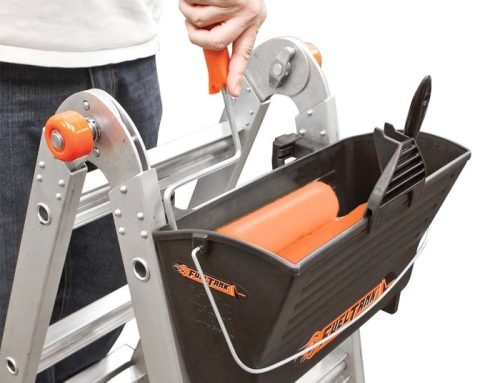Ladder safety is such an important aspect of using height access equipment that we're always shocked at the injuries some people sustain when falling off a ladder. Usually, it's a broken bone or a bump to the head as people land on the ground, but rarely do we see a laceration caused by a ladder fall. One unlucky painter from Essex gave us something to wince at after a fall from a ladder which cut open his arm, requiring a skin graft and multiple procedures to correct it. Martin Burns had been up a ladder when it snapped, and during the fall ended up slicing into his arm, leaving a 20cm gash under his right arm.
It's unclear how or why the ladder snapped, but aluminium ladders can break at weak points caused by dents or bends which have damaged the stiles of the ladder. Burns was only four feet up the ladder at the time of the accident, and doctors said if he had fallen from a taller height he might have suffered worse injuries, even severing the main artery into the arm, which could have seen him bleed out at the scene. Despite the severity of the injury he sustained, he was relatively lucky that it wasn't much worse.
This injury was caused by the stile of the ladder snapping and not from a fault in a rung, so it really highlights the importance of checking every part of the ladder and not just the rungs when carrying out a safety inspection. The rungs are important; after all they're what you'll be standing on, so they have to be sturdy and free from any damage. What looks like a small dent can become a much larger one when pressure is applied, so take care to check for dents and to monitor whether they get worse – a very small dent may hold up under a light weight, but if the person using the ladder tips the scales at the 150 kilo mark (which is the maximum recommended weight for most domestic and light trade ladders) then this force exerted on the rungs could cause a small dent to bend and even snap.
The stiles are also prone to getting damaged, usually through rough handling and cramped storage conditions, where other items might knock the sides of the ladder causing small dents that can grow into larger ones as soon as anyone climbs the ladder. It is a good idea to protect your ladder in storage, using old towels or blankets to provide a cushion against other objects knocking into it. Tying ladders to a roof rack too tightly can also cause bends and weak spots in the stiles, so again, some cushioning or proper ladder clamps can help protect against this kind of avoidable damage.
We can't say this too many times – always do a visual inspection of your ladder each time you use it. Yes, it might seem like being over-cautious but it will only take a minute or two of your time, far less than the amount of time you'll be out of action if a faulty ladder causes you to fall and get hurt. In today's busy world two minutes can seem like an awfully long time, but if you think back to the early days of the internet, you'll see your ladder inspection takes less time than connecting to a dial up modem, and is much, much quieter! Taking a little time to slow down and make sure you're being safe is time well invested, not time wasted.
So, next time you get your ladder out, take a couple of minutes to check it over for damage, knocks and any weak looking spots. Do it with a cuppa and a biscuit and you're laughing! We even sell inspection tags, so you can keep track of the last time your ladder was checked over, a legal requirement for businesses that use ladders.






Leave A Comment
You must be logged in to post a comment.